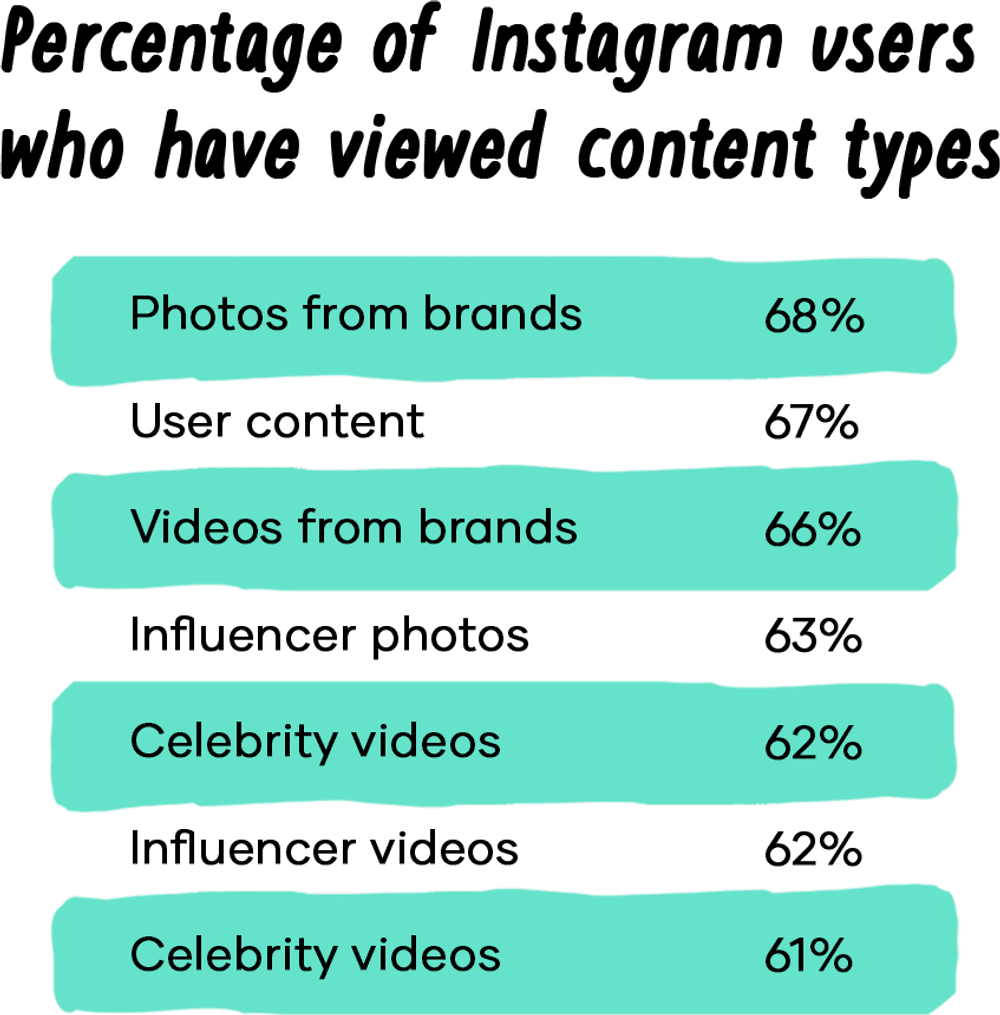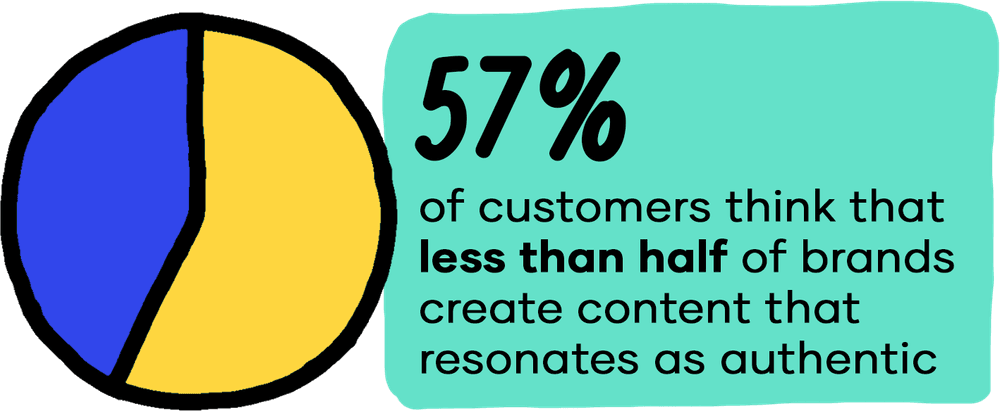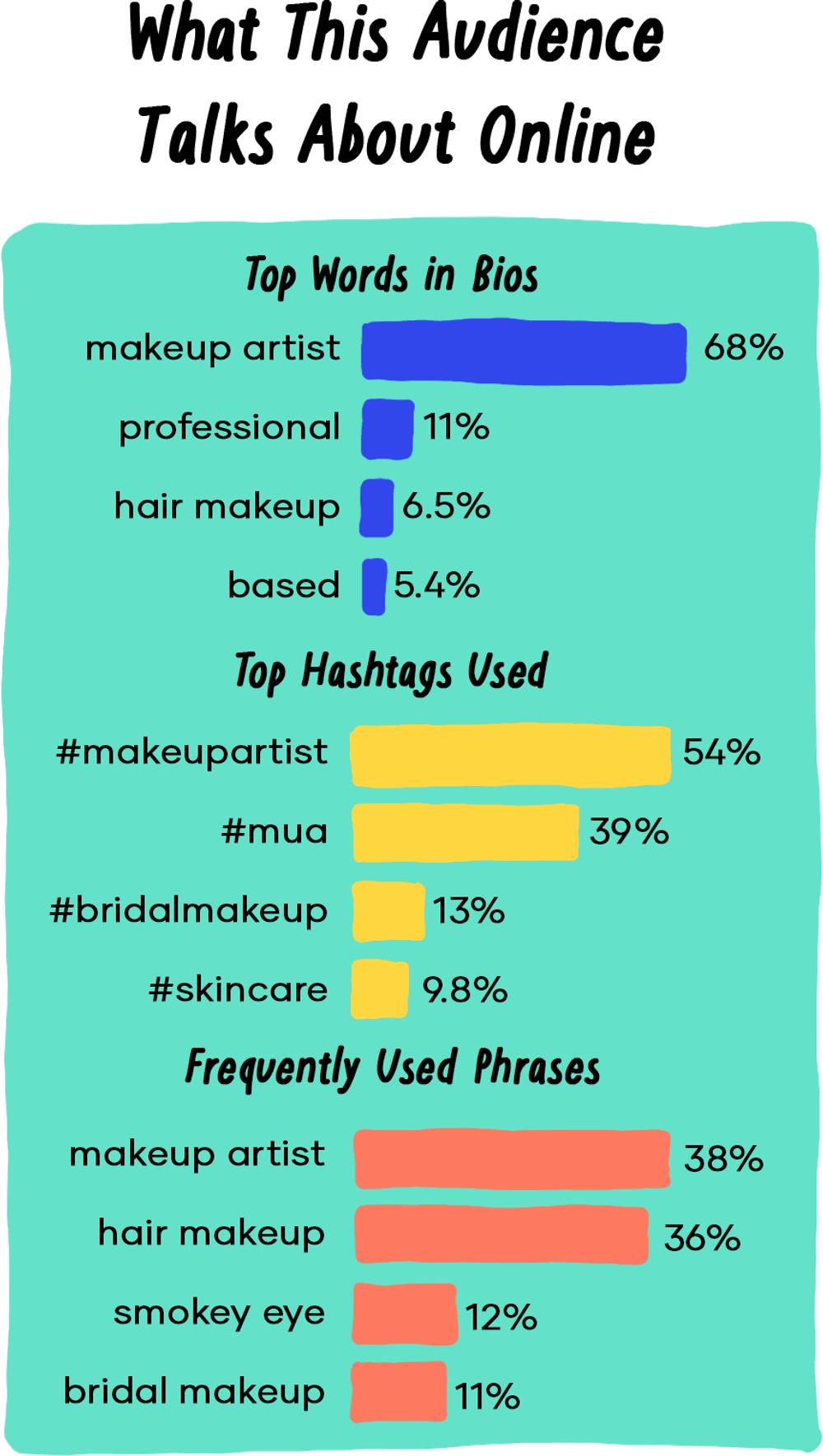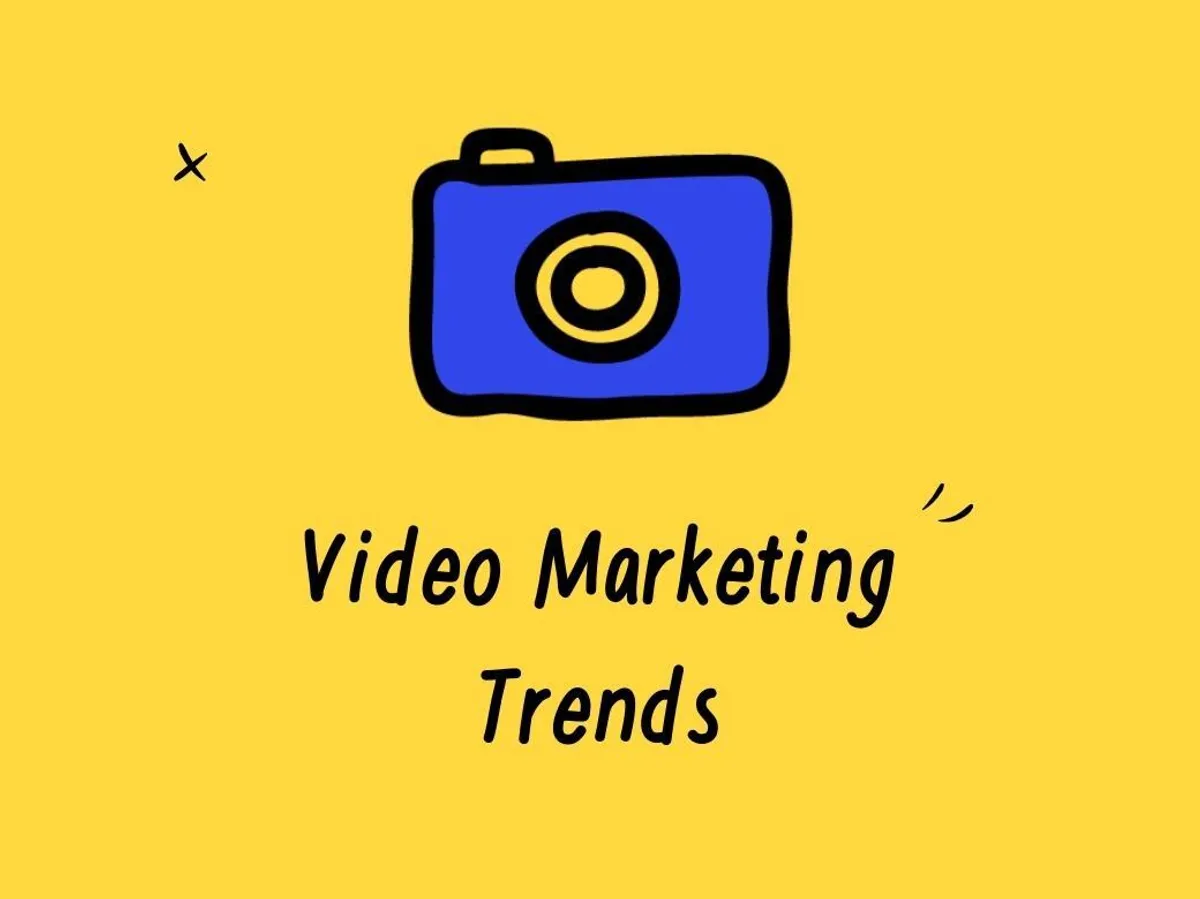Video Marketing Starter Guide: Strategy and Tips (2026)

Contents
Video marketing is a strategy businesses use to attract leads and customers. You can think of it as a subset of content marketing, which consists of formats like blog posts, images, and audio content.
But what sets online video apart isn't just the visual factor. It's the number of people watching them daily.
The COVID-19 pandemic resulted in 96% of consumers watching more videos than before. If we combined the minutes viewers spend monthly consuming video, it would translate to over 25 consecutive days of consumption.
That's a lot of time folks are spending with influencers and brands. So, it’ll come as no surprise that video marketing presents a great opportunity for eCommerce businesses to reach and connect with their target audiences.
If you're not already using videos—or, worse, sharing content without a solid video marketing strategy—then this guide is for you.
Stay up to date
How Does Video Marketing Work?
Video marketing is the process of creating an engaging video and uploading it to a marketing channel. It’s the content format a business uses to reach new audiences, showcase products, and generate sales.
Like any piece of content you publish on the web, online video requires a strategy to succeed. Otherwise, you'll spend countless hours, weeks, or even months shooting arrows in the dark. (And unless you're a sharpshooting pro with owl-like eyesight, you'll miss more than you hit).
Video marketing performs best when it's part of a well-thought-out process. In fact, a video marketing strategy has an approach similar to blogging. You’ll need to put time into researching, ideating, and outlining what each video will discuss—and, more importantly: how you'll get it in front of your target audience.
What this turns into is a:
- Calendar of trending and engaging topic ideas
- A script that's formatted to be short and valuable
- Distribution plan to ensure maximum reach
Let's put that into practice and say you’re creating a video marketing strategy for your fashion eCommerce brand. Your target audience is Gen Z females living in the UK. After researching the pain points of your target audience, you uncover that their biggest purchasing motivator is FOMO (the fear of missing out).
You decide to shoot a series of videos featuring the influencers they follow. Then, you publish them on the sites your audience is using—including Instagram and Facebook. You even put some cash behind your video to make sure the right audience sees them.
Of course, there are various ways you can approach your video creation, marketing, and distribution. But more on that later.
The Benefits of Video Marketing
What's the value of using videos to market your business? Is it worth investing your time and money into?
If you ask 86% of businesses, the answer is yes. And the numbers are growing. Back in 2016, only 45% said video marketing is worth their time and money.
Video marketing is growing in popularity for a variety of reasons. The most popular: social media videos are taking over. An impressive 66% of Instagram's one billion users view videos on the platform—beating influencer and celebrity photos.

But how exactly does it translate to success for your business? Let's review some of the top benefits of video marketing.
Raise Brand Awareness
Your brand is what humanises your business. It's what connects businesses with their audience and builds trust.
But brand building requires consistency. The more a person sees your logo, brand name, or content, the higher the odds of them remembering you. Once that happens, you become top-of-mind when making purchasing decisions for your solution—hence why brand consistency has been proven to increase revenue by 33%.
What better way to get your brand in front of prospects than with video? Not only are people looking for and consuming branded content—social media platforms are as well.
In case you haven't noticed, platforms like Instagram, Facebook, and even LinkedIn are favouring video posts.
According to Twitter, it’s the fastest-growing video advertising tool. It has more than two billion video views daily, translating to a 67% YoY growth. And even Facebook sees more engagement for video content.

This preference of video happens because social algorithms rank content with the highest (and longest) engagement.
Think about it: When's the last time a text-based post captured your attention for 5 minutes? Unless you're reading and responding to comments—likely never. It's not that long-winding text posts with excellent stories don't spark engagement. It's just that social videos drive engagement a lot better and more consistently.
Take a look at these facts:
- People are 2x more likely to share videos
- Tweets with video get 10x more engagement
- Video ads reduce cost-per-engagement by over 50%
- Instagram videos get more engagement
- Instagram videos generate an average of 150 comments compared to image (65) and carousel posts (80)
Build Trust and Credibility
Why should customers choose you over a competitor? If you don't earn the trust of your prospects, then the odds of converting them into paying customers is next to none.
Studies prove this: roughly 33% of American consumers say trusting a brand is important when making a purchase. They have a natural fear of wasting money on an inferior product or service. Nobody likes the feeling of regret.
For others, purchasing decisions go beyond the quality of the product—it's about corporate social responsibility. This is true for nearly 80% of consumers across the world. If you're perceived as unfair or uncaring, it'll hurt your credibility (and trust-building).
However, some are struggling to connect with their core audience. Why? Because the brand doesn't feel genuine. Roughly 86% of consumers state authenticity is essential to deciding on which brands to support.

Social media videos build credibility if they’re used as a vehicle to share your values and mission. For example: publishing a video of the CEO discussing the company's stance on injustices, environmental hazards, and other important topics to their target audience is more gripping than a blog post.
Most brands using visual content to connect with prospects are seeing favourable results. Around 53% of marketers state video raises awareness. And another 52% say it builds trust with potential customers.
Influence Buying Decisions
Every brand wishes to wield the power of influence. With it, you could convince prospects to convert and stick around for years to come.
Unfortunately, this isn't always the case.
The businesses that do have influence over their buyers put in a ton of effort to gain it. This includes publishing content that delivers value, insights, and actionable tips. If you can do it while being entertaining, even better.
This is what makes visual content a must. When you dish out excellent information, it builds trust and credibility—hence why webinars and live video perform so well.
Remember the shareability of videos we mentioned earlier? Those shares can lead to more revenue. Video marketing statistics show close to 60% of Millennials made travel plans and ate at a restaurant after seeing a friend's post on social channels.
Nearly 80% of video marketers say video directly boosts sales. And the people agree—84% say watching a brand's product or service video convinced them to buy.
If you're looking to gain influence over your target audience, video marketing will take you a step closer to achieving that goal.
Increase Ad Conversion Rates
Publishing SEO content is an ideal long-term strategy. But what happens when you need results a bit faster? Say, for an upcoming product launch or sale?
In this case, you want to use search engines and social media marketing differently. Pay-per-click (PPC) ads offer an opportunity to reach a specific group of customers immediately. But getting them to react once they see your ad is another story.
This is challenging to pull off when you rely solely on text-based ads. This is why you consistently see ads with photos and GIFs. Our approach? Take it a step further with video ads to boost your conversion rate.
A study from HubSpot found that video ads receive 20% more clicks than image-only adverts. This isn't shocking since video is more eye-catching and offers more information, which leads to more conversions. Some even say videos are better than PPC; 68% of marketers claim they outperform Google ads.
All of that goes to show you should aim for a nice mix of organic and paid videos in your marketing campaigns.
Improve Your ROI
Return on investment is the primary goal of every marketing strategy. Luckily, video marketing slots perfectly into a marketer’s mission to prove the value of their strategies to stakeholders.
According to 86% of video marketers, their strategy results in increases to website traffic. Another 84% say it generates leads.
Overall, 87% of marketers believe that video marketing provides good ROI.
Of course, there’s more to a high ROI strategy than sporadically sharing videos on your website and company YouTube channel. You’ll need a well-thought-out strategy to reach your intended audience—which is exactly what we’ll cover.
11 Types of Marketing Videos
No one type of video will guarantee engagement, views, or conversions. That’s why it's always best to experiment to determine what your audience responds to.
Unsure where to start? Here's a list of different video types to try.
1. "The Spot" Videos
You see them all the time. They show up in the middle of movies, shows, football games, and other television programs. This type of video is short—around 15- to 30-seconds long—and is known as a "spot" video.
(The name is fitting: They take up a small spot in a video broadcast.)
In the past, these commercial breaks were mainly found on television. Today, you also see them on YouTube, Hulu, and other streaming services.
What remains the same is their purpose: to promote products, services, or causes. You can do the same by creating a spot video and finding placements on YouTube channels or other social platforms.
These ads are short and sweet, so you'll have to make them enticing from the start. You only have a few seconds to capture viewers' attention before they leave (or click the dreaded "skip" button).
If you decide to use spot video ads, consider using social media channels. These are easier and cheaper than breaking into TV and streaming services.
Now comes the all-important question: does this type of marketing video actually work?
Numbers show 30-second video ads perform well. Back in 2018, only 55% of marketers used them. Then in 2019, it increased to 66%. The next most popular length is 15 seconds, so shorter is better.

2. Explainer Videos
People explore the internet to find sources of information. Sometimes it's to make a purchasing decision; other times to learn about a problem they're having.
If you want to reach these groups, you have to create content that answers their questions and provides a solution.
Blog posts are great at this. But everyone has different learning styles. Some people prefer to watch rather than read. By offering a video format alongside written content, you can appeal to these target customers and potentially earn their business.
An explainer video is perfect if you have a product or service that's easily (or often) misunderstood. Maybe you have a kids playground slide that customers struggle to set up. Perhaps you’re promoting a new product and want to show how it's applied.
Regardless of what you’re showing, eCommerce brands can use a video to explain the functions, features, steps, and benefits.
Data shows that 96% of people who watch explainers learn about a product or service before buying. Not bad for a video needing little to no creativity.
To make the most out of this type of video content, focus on making the content simple and easy to understand. Answer common questions and demonstrate how everything works. That way, viewers are ready to make a decision—or at least be one step closer to it.
3. Product Demo Videos
Explainer videos provide an overview of your product or service. It’s a more detailed breakdown of your solution—AKA, an excellent way to toot the horn of your product without being too salesy.
This type of video is great at showing off features and benefits without making promises about results.
Product videos are ideal for people in the middle or bottom of the sales funnel. The goal is to provide valuable insights about the product and how it resolves the target customers’ issues. This way, they can make an informed buying decision.
There are various ways you can present your product demo. For example, you can do an unboxing of the product, showing what comes in the order. Then demonstrate how to set it up yourself.
The idea is to make your product feel simple so it's not confusing or intimidating. List everything out, but don't over-explain. Short videos tend to perform better. Cover the essentials, then provide a link or contact information for users to get additional info.
4. Viral Video
When you think of viral videos, what comes to mind? Is it a cute cat montage? Another trending dance on TikTok?
Viral videos are the holy grail of marketing. But not many can achieve virality with their video content… Or so it seems.
You have to ask: What does it mean to go viral? Is it garnering millions of views in several days? Sure, that definitely meets the requirements. But there are different levels to virality. What's considered viral for one campaign may not be for another.
For example, a Kardashian Instagram video isn't viral unless it's getting billions of views. However, a small business reaching tens of thousands on Facebook would be deemed viral. Virality depends on the market and the industry.
But you don't want to rely too much on vanity metrics (views and likes). Let's say your goal is to get more conversions. If your video is trending on social media but isn't getting leads, then it's a low performer.
When designing campaigns for a viral effect, focus on delivering what your audience wants. If your content is high-value, folks won't mind sharing it like crazy.
5. Behind the Scenes Access
People enjoy learning about the brands they support. This is what makes behind-the-scenes videos popular.
Think of the wildly popular MTV series "Cribs" or any YouTube video labelled "A day in the life of...".
Humans have a deep desire to connect with the influencers in their lives. They want to understand the people behind the (personal or business) logo. This is why brand storytelling is such a big deal today.
In the past, businesses felt corporate, cold, and unempathetic. The customer felt like just another dollar to acquire. Now that companies are humanising their brands, consumers are gravitating towards them.
Authenticity, empathy, and morality are critical to winning over the 21st-century consumer. So in your behind-the-scenes videos, don't just focus on how your office operates. Show them the people behind the product or service, including the founders and CEO.
This is the perfect time to make a personal connection and potentially earn viewers' trust.
- “Customers aren't just interested in seeing the product or service-related postings and adverts. They want to see behind the scenes and meet the people that run your company. This entails creating videos that include your employees and demonstrate how you run your business. The goal is to make your brand more human.” — Darshan Somashekar, Founder and CEO of Solitaired
6. Customer Testimonial
There's nothing like reading a peer review on a product or service. In fact, you likely use the word of fellow shoppers to make your own purchasing decisions.
It's the way of today's buyers. And why wouldn't it be? We have vast information (thanks Google) and access to millions of people (thanks social media). Not using these resources to learn about solutions would be insane.
This is why you'll find 95% of people saying positive and negative reviews) persuade their buying decisions. Roughly 40% believe video testimonials are more effective because they:
- Are more authentic than a business sales pitch
- Visualise how a product or service works
- Demonstrate how a product or service can impact their life
- Showcase a real person and help the viewer understand their story
With customer reviews, prospects can quickly identify whether a brand is worth purchasing from.
Leverage this behaviour by publishing case studies on your website. But not just any testimonial—a video testimonial. For some customers, it’s 10x better than a written review because it captures the emotion behind the story.
Video shows the frustration, anger, happiness, excitement, and content of your customers. Odds are, your prospects are going through the same emotions and want to achieve the same outcomes. So, add them to your home page, email marketing campaigns, PPC ads, and social media posts.
7. Short Films
Directing a short film doesn't sound like a marketer's job, but it's another form of brand storytelling that builds credibility, trust, and leads.
The purpose of a short film is to offer deeper insight into your business. The length can be anywhere between 10 and 25 minutes. You don't want to go too long because people are busy and have less time to dedicate to watching a brand video.
The topic and format of your short film can vary. For instance, it can be a documentary of the founders and their struggle to start the business. Or showcase how your company's employees are giving back to the community.
Here's that phrase again—brand storytelling. It should be at the core of your short film to set your business and product apart from competitors.
But don't make it just about your business or product. It's a mini-movie designed to build a connection with your audience. Find a way to add value or inspire action.
8. Influencer Endorsements
Being endorsed by an influencer solidifies your brand as a trusted entity. However, you can't get endorsed by just any influencer. You should find one within your industry and niche, so their audience is similar to yours.
More importantly: Just because they have thousands of followers, it doesn't mean an influencer’s audience is engaged.
Engagement rate is important because you want your influencer posts to receive a fair number of views, likes, shares, comments—and most importantly, clicks.
You'll find some smaller influencers with a more active community than a larger one. And their recommendations are more well-received, which means higher conversions for you. These are the golden nuggets you want to target.
9. Live Video
The internet made it easier and faster to connect with your audience. Email was the first to change the game—then later instant messenger. But there's nothing more real and immediate than real-time videos.
One report shows 30% of video marketers are live streaming on Facebook. Just 14% are using Instagram and YouTube, making less competition on those channels.
But how should you use these channels to gain a competitive edge? There are several ways to use live video, including:
- Webinars
- Q&As with the audience
- Expert interviews
- Live demonstrations of a product or service
- Behind the scene videos of an event
It works best if you notify your audience days or weeks in advance. If you don't have a large enough audience, consider running a paid promotion using social media ads and boosted posts for a higher attendance rate.
Also, be wary of the length—you don't want your live videos to be too long to where your audience loses interest. On Instagram Live, the max length is 60 minutes. Try to keep it beneath an hour, depending on the topic and format.
- “The ideal length is determined by the video's content. A quick tip could be a simple, one-minute video, while a customer recommendation may last three minutes and a tutorial can last five.
According to a study, most marketing videos should be no more than two minutes, but the optimum length varies depending on where they are posted. The ideal video duration for Facebook, for example, is two to five minutes. It takes between 30 seconds to two minutes on LinkedIn, and only 30 seconds on Twitter.” — Tommy Gallagher, Founder of Top Mobile Banks
10. Animated Videos
Animated videos are perfect for product demos, ads, and explainer videos. You can also try brand storytelling, turning your employees into comical cartoons. Animations are eye-catching, even to those with short attention spans.
But to keep it, you'll have to quickly pique their interest or risk losing them to another distraction on their feed.
What's appealing about animated videos is it empowers your creativity. You can develop a world, characters, and stories in a way you never could in the real world.
Don't worry—you don't need drawing or animation skills to pull this off. Nor do you need to know how to write a script. There are services available from video production agencies to create animated videos from scratch.
11. Social Media Videos
We already discussed how to use live videos for social media. Now, it’s time to venture into pre-recorded video content.
Sharing recordings of webinars, explainer videos, and even podcasts can potentially generate buzz and engagement. In fact, you can repurpose some of your other content into videos and share them across your networks.
How do you do this? Here are several ideas:
- Change a blog post into a video presentation
- Create snippets of video recorded podcasts
- Turn podcasts into audiograms with an appealing background and closed captions
- Plan a live event and invite guest speakers your audience follows
- Transform a blog post into a video script and create a talking head or animated video
The opportunities go as far as your creativity takes you.
12. User-Generated Content (UGC) Videos
Not all of the content you’re producing has to be created in-house. In fact, your potential customers are great sources of video content. (And in most cases, they’re already creating it for you.)
Look through your social media mentions, and you’ll likely find a plethora of video content—such as reviews, tutorials, or testimonials—from existing customers.
- “User-generated content is one of the greybeards of this year and the near future. Brands have been trying to humanise their marketing strategies all year, and user-generated content achieves that easier than other marketing channels.
For instance, our YouTube-based user-generated content generates more than triple the amount of engagement and traffic that other video types generate. To think of it, investing in channels to attract more user-generated content will be a defining feature of video marketing in the future.” — Alina Clark, Growth Manager and co-founder of CocoDoc
How to Create a Video Marketing Strategy
Video is an amazing tool for getting views, traffic, and potential leads. But to get results, it takes more than publishing and sharing videos across the web.
Ready to create your first video marketing campaign? Here’s an eight-step guide.
- Define your goals
- Research your target audience
- Decide what videos to make
- Set a budget
- Hire a team or agency
- Choose a video hosting platform
- Create a distribution plan
- Measure video performance
1. Define Your Goals
Why do you want to create video content for your brand? Is it to grow your email list? Book more calls? Or maybe build brand awareness?
When your marketing goals are clear and measurable, it's easier to develop methods to achieve them.
For example, if your goal is to grow your email list, you can create videos for TOFU (top of the marketing funnel) prospects. These are informative and help them understand their problem and how to solve it.
Share the video in a promoted social media post that drives visitors to a relevant landing page—like an in-depth blog post that provides tips or examples. Then, prompt potential customers to sign up for your newsletter.
Better yet, offer a gated content upgrade such as a checklist or guide. Exchanging an email for a valuable freebie is a no-brainer for most. Just make sure it's related to the video.
2. Research Your Target Audience
Would you ever dial a random number and pitch your service to whoever picks up the phone? We sure hope not.
Yet, this is the approach many marketers take with their video marketing. They pay for video production, publish the content to their eCommerce website and social accounts… and sit back and wait.
This doesn't work because there's no targeting whatsoever. Everything from the topic, tone, voice, length, and channel plays a role in the success of your video campaigns. Always research your target audience before even thinking about the video you’ll create and how you’ll distribute it.
First, reach out to customers—both current and potential—and conduct surveys. This provides excellent qualitative insights, especially if you ask open-ended questions.
Alternatively, SparkToro is a platform that gathers data and insights from billions of public profiles. You can learn things like:
- Who's talking about the topic you're discussing (including demographics)
- Social accounts do they follow
- Websites do they visit
- Podcasts do they listen to
With this information, you can learn the best topics to tackle—and then create a killer distribution strategy that gets your video content in front of your audience.

3. Decide What Videos to Make
Once you know your audience, it's easier to determine the best videos to use to connect with them.
Head back up to the list of marketing videos and choose the format that best suits your audience, topic, and video length.
If the audience is more professional, for example, skip the silly or comedic animation. Instead, go with an explainer video or product demo. Influencer endorsement videos may be better suited to eCommerce businesses targeting a younger demographic.
4. Set a Budget
Not having a set budget puts you in a position to over or underspend on marketing.
Both are problematic. On one end, you're eating away at your bottom line. On the other, you're undercutting your marketing efforts, limiting your reach and quality of production.
For instance, hiring a low-budget videographer will likely get you a mediocre video. Yet, you can't go all out and bring aboard an A-list producer that costs more than half your budget. There needs to be a balance between quality and affordability.
Expect to pay between £2,000 - £5,000 for a fully produced video as a rough guide.
5. Hire a Team or Agency to Produce the Video
With a budget in place, you're ready to search for a team or agency to handle video production.
If you’d rather own the video production process, consider hiring an employee. They’ll be working for you full-time and will manage everything from defining your video goals right the way through to measuring performance.
If you don’t have the capacity to hire someone full-time, another option is hiring a contractor working on a project-by-project basis.
If not, the next best thing is to partner with an agency and pay only for what you need. Video production agencies have their own teams of experts. You get to tap into that expertise without committing to a salary or relying on one person.
6. Choose a Video Hosting Platform
Once you’ve hired an agency to create your video, it’s time to think about where your video will be hosted.
Posting a video to your website is often the default response. After all, your video was created for your target audience—people already browsing your website. It makes the most sense to host it there, right?
Not necessarily. While it's always good to host your own content, no one will see it without heavy promotion—especially if your site traffic futures are low. But if you do this well, you can gain all the fruit (traffic) from your labour.
Another option is to host your video on a third-party hosting platform such as YouTube or Wistia.
YouTube is the second-most popular search engine, which makes it ideal for promoting video content. Target customers can turn themselves into subscribers and get notified whenever you post a new video.
But like Google, it takes time to rank your video after optimising it. There's also the factor of having your videos unpublished or demonetised (aka lack of control).
If you're worried about folks stealing your video content, Wistia is your best bet. It's tougher to swipe videos from Wistia than on YouTube and other platforms. It also comes with analytics to see how well your content performs.
You can embed links directly into the video (YouTube allows the same), which is perfect for driving viewers to your website.
However, since both options are third-party platforms, it still removes absolute control over your content. If the site goes down, your video content goes with it.
- “Facebook and Youtube are excellent marketing channels that assist you in reaching out to more customers. You can have a whole section dedicated to videos on your website, or you can start by using videos in blog entries. Platforms with a large audience, such as Facebook and YouTube, can be utilised for paid advertising because their CPMs are lower than those of private blogs and social media channels.” — Dean Scaduto, Chief Editor of Kitchen Infinity
7. Create a Distribution Plan
How will you get your videos in front of your target audience?
With the research you did in step two, you should know which channels they frequent. You can use this information to identify possible platforms to publish your content to.
For example, you can:
- Reach out to blogs your audience reads and offer to create a guest post. Embed your video directly into the content.
- Repurpose the video into different formats to share it on multiple channels.
- Share the video on social networks more than once throughout the year.
- Upload them to your website and embed them in your email campaigns to improve open rates.
Begin with the channels you control, then expand to third-party platforms to expand your reach.
8. Measure Performance
A great content marketing campaign has goals, KPIs, and metrics to track. Without them, there's no telling what works.
That’s why it’s crucial to have a plan of how you’ll measure video performance based on your specific goals.
Let’s put that into practice and say the goal of your video marketing campaign is to increase website traffic. The KPI you’d measure in that case would be self-explanatory: the increase in website traffic before and after you posted the video.
You can also use analytics to learn which topics and video formats get the best results. If explainer videos get the most views, prioritise those going forward. If you find that animated videos don’t perform as well on social media as live videos, change your strategy.
This way, you can do more of what people enjoy and less of what they don't.
Bonus: 7 Video Marketing Tips and Ideas
Got this far and ready to hit the ground running? Before you go full steam ahead with your new campaigns, consider the following video marketing tips:
Write a Script in Advance
Trying to freestyle on camera or whip up a script at the last minute isn't a good idea. It slows down production and increases the odds of your video missing the mark.
Take some time to draft a video script beforehand. How will you open the video? What are the main talking points you want to cover? Where are you sending people after they’ve watched the video? Include them all in your script, so nothing gets missed.
Optimise for Mobile
Videos appear differently across devices. You can have the best looking video on your desktop computer, only to load it on mobile and not see a thing.
Most video views take place on mobile, so always make sure your videos are fit for a smartphone. Publishing platforms like YouTube do this for you.
Double-check that any text on the screen is legible. Remove auto-play feature, and record the video as a square vs landscape. Plus, remember that most people watch mobile videos on mute. Upload captions so people can still understand what the video is about.
Repurpose It
You spent time and money producing a video. Why not get more out of it by repurposing it into another format?
Turn your video content into:
- Slideshows
- Blog posts (using the video script)
- Short-form videos (like Snapchat Stories)
The more mileage you can get from a single video, the higher your chances of getting a return on the investment of producing it.
Steve Scott explains that for Spreadsheet Planet, “Long-form video will be recorded and split up into smaller bits to be distributed across various social networks by businesses that thrive in the video.”
- “Longer-form content will be archived on their website and YouTube, as well as transcribed into articles for SEO purposes. Short-form content will also be modified for use in memes, vertical videos, quote cards, and other formats.
The majority of our reach will come from boosting these postings to bespoke audiences, local locations (for retail stores and service businesses), and interest targets because social networks are a pay-to-play option for distribution (for e-commerce businesses). Facebook, Twitter, TikTok, Snapchat, and even LinkedIn all use the same three-stage funnel structure for their ad system, which means that boosting posts is done in the same way across the board.”
Back the Video with Ad Spend
The higher your reach, the better the odds of getting more leads off the back of your video.
The only problem? It’s getting increasingly difficult to reach people through organic social media posts. So, consider putting some advertising spend behind your video marketing campaigns.
For example, with Facebook boosted posts and ads, you can choose the audience you want to attract, set a goal for your campaign, and reach more of the people you created the video for.
Optimise the Thumbnail
Your video's click-through rate is an important metric to keep in mind when assessing your video performance. It’s the percentage of people who saw your video and clicked the “play” button.
Three things can improve video click-through rates: Titles, meta descriptions, and thumbnails. Make all three relevant to the video and contain text. This can be the title, an enticing question, or a surprising statement. Just don't become clickbait.
Optimise for Video SEO
Just because a video is visual doesn't mean it can't be optimised for search. Heck, YouTube is the second largest search engine in the world. And all of its results are video.
To optimise your video to get found in search engines:
- Include the keyword in your title and description
- Create an eye-catching thumbnail to improve the click-through rate
- Post high-quality videos with high-quality audio so it doesn't get down-voted (and down-ranked)
A/B Test Your Videos
If you're running video ads or other short videos, create multiple versions.
Play around with the title, description, and format. Maybe use animations in one and real people in another. If it's for a product, test the landing page and call to action to see which combinations convert the best.
Not every video you create will get dream results the first time—and that’s OK. The best way to figure out which type of video your audience best responds to is to test it. Run with the ones that get the better results, and ditch those that don’t.
Video Marketing Examples
Feeling a little stuck about what to do next? Take inspiration from these video marketing examples.
1. London Basin Company
The London Basin Company is an eCommerce brand that sells luxury decorative sinks through its eCommerce website.
The video is short, simple, and heavily product-focused. There are no words or text, but the demonstration speaks for itself. It matches the brand's tone and appeals to audiences looking for unique water fixtures.
The video was used as part of a Facebook ad campaign, resulting in a 5+ ROAS.
2. Foga
Foga is a smoothie brand that does all of its business through an eCommerce site.
This video does an excellent job of optimising for mobile with its portrait view and large on-screen text. The video displays the product and what it can do. It's short, to the point, and minimalistic.
The best part? No fancy budget was required—it was produced on-site by us.
3. Vivense
Here's another short but does-the-job-well video. This time, for a homeware brand called Vivense.
The video does a great job of showcasing the brand’s products without feeling too overwhelming. At just 15 seconds long, it was optimised for mobile, and used for an Instagram Reel.
Getting Started with Your Video Marketing Strategy
If there's anything to take away from this post, let it be this: Video marketing works wonders for eCommerce brands. But only if it's a part of a strategy.
Not confident you can build one that'll yield results? That's what we're here for. At The Social Shepherd, we help businesses develop video campaigns that convert.
We'll walk you through your goals, identify your target audience, and how to reach them best. Our experts consist of videographers, editors, and social media marketers. We can even connect your campaign with influencers to increase your reach.
Ready to get the ball rolling with your video marketing campaigns? Get in touch with us today.
Video Marketing FAQs
Video marketing is a strategy businesses use to attract target audiences using video content. With more people consuming online video, it's critical for brands to adopt it to gain a competitive edge.
A video marketing strategy is a plan businesses use to build video campaigns that convert. This consists of choosing the best topics, video formats, and channels to reach prospects. It also involves distributing and measuring each video to determine success.
There are various types of video marketing businesses can use, including how-to videos, explainers, product demos, and animations. You can also use multiple delivery channels, including social media video ads, boosted posts, social video posts, and search engine ads.
To become a video marketer, you don't need a fancy degree. However, you'll need to understand digital marketing best practices and content strategy. There's no technical knowledge required since you can hire a team or video marketing agency to produce the video for you.

You might also like
Don’t be sheepish
let’s talk



